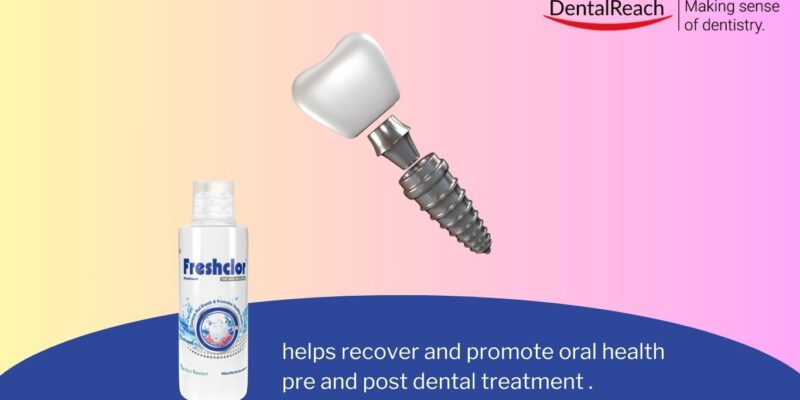Imagine a patient walks into your clinic, curious about dental implants but hesitant to proceed. They’ve heard conflicting information, worry about the cost, or fear the procedure itself. As a dental professional, your role is not just to provide treatment—it’s to educate, guide, and reassure them every step of the way. Effective counseling can make all the difference in helping them make an informed and confident decision.
Have you ever had a patient who seemed eager but suddenly backed out? Or one who left your clinic feeling overwhelmed by too much information? These 10 keys to implant treatment acceptance aren’t just about presenting facts—they are about connecting with patients, addressing their concerns, and making the process feel approachable.
1. Build Trust Through Open Communication
Patients need to feel comfortable and confident in their dentist. Start by establishing rapport, listening to their concerns, and addressing any fears. A patient who trusts you is more likely to accept treatment recommendations.
- Trust begins the moment a patient walks into your office. Greet them warmly, make eye contact, and engage in a friendly conversation before diving into the technical details. Showing genuine interest in their concerns and overall well-being creates a sense of security.
- Active listening is key—allow them to express their anxieties, doubts, and questions without interruption. Acknowledge their fears and reassure them with empathy and expertise.
For example, if a patient is worried about pain, explain the use of local anesthesia and sedation options while emphasizing your commitment to their comfort.
2. Educate with Simple Language
Avoid overwhelming patients with complex terminology. Explain in simple terms what dental implants are, how they function, and why they might be the best solution for them.
- Use analogies, visuals, and models to enhance understanding.
- Instead of using technical jargon like “osseointegration” or “abutment,” simplify the explanation.
For example, describe a dental implant as ”
a small titanium post that acts like an artificial tooth root, providing a strong foundation for a new tooth.”
- Using relatable analogies can also make concepts easier to grasp. You might say, “Think of a dental implant like the foundation of a house—just as a strong foundation supports the entire structure, an implant supports your new tooth, keeping it stable and functional for years.”
- Visual aids can be particularly powerful in patient education. Show a 3D model of the implant, use before-and-after pictures, or play an animation that walks them through the process.
3. Highlight the Benefits Over Alternatives
Educating them on how implants provide a permanent, stable solution can shift their perspectives.
Many patients initially lean toward traditional dentures or bridges due to familiarity or lower upfront costs. However, they often don’t realize the drawbacks, such as bone resorption, discomfort, and frequent replacements.
- Emphasize why dental implants are superior to bridges or dentures.
- Focus on longevity, functionality, and preservation of bone health.
- Discuss the long-term cost-effectiveness compared to repeated denture replacements or bridge repairs.
4. Address Common Fears and Misconceptions
Many patients fear pain, surgical complications, or implant failures. Fear counselling is crucial as implants is after all, a surgical procedure.
- Reassure them with facts: modern implant procedures are minimally invasive with high success rates.
- Share success stories and patient testimonials to alleviate anxiety.
- One of the most common fears patients express is pain. A good way to ease their concern is by explaining that dental implant surgery is performed under local anesthesia, and most patients compare the post-operative discomfort to that of a simple tooth extraction.
You could say,
“The procedure itself is pain-free, and with proper medication, any discomfort afterward is manageable and short-lived.”
- Another common misconception is that implants might fail or not integrate properly. You can address this by stating,
”
With advancements in implant technology and careful case selection, the success rate of dental implants is now over 95%. When patients follow post-operative care instructions and maintain good oral hygiene, the chances of complications are very low.”
5. Provide a Clear Treatment Plan
Patients feel more at ease when they know exactly what to expect. Providing a timeline helps patients visualize the journey and eliminates uncertainty.
Break down the implant process into clear, manageable stages:
- extraction (if needed)
- healing time
- implant placement
- osseointegration
- prosthesis attachment.
For example, you can explain it like this: ”
The implant process is completed in phases to ensure the best outcome. First, if a tooth needs to be extracted, we’ll allow the area to heal before placing the implant. Then, the implant is inserted into the jawbone, where it naturally fuses over the next few months. Once it’s stable, we attach a custom-made crown that looks and feels like a natural tooth.”
6. Discuss Financial Options Transparently
Cost is often a major factor in a patient’s decision-making process.
- Be upfront about pricing and clearly explain the value of the investment in dental implants.
- Many patients hesitate due to the higher initial cost, but a well-explained financial plan can make treatment more accessible.
Start by breaking down the costs: ”
The price of an implant includes the surgical placement, the abutment, and the final crown. While this may seem like a bigger investment upfront, it often saves money in the long run compared to replacing dentures or bridges every few years.
”
7. Set Realistic Expectations
Patients need to understand that while dental implants are a long-term solution, they require time, patience, and post-surgical care.
Explain common post-operative experiences: ”
You might have mild swelling or discomfort for a few days, but most patients return to normal activities within a week.” Comparing it to a more familiar experience can also help: “It’s similar to having a wisdom tooth removed—some temporary discomfort, but very manageable.”
- Managing expectations from the beginning prevents misunderstandings and ensures patient satisfaction.
- When patients know what to expect at each stage, they feel more in control and are more likely to stay committed to their treatment plan.
It’s also important to address the healing timeline. ”
Osseointegration, where the implant fuses with the jawbone, takes a few months. Rushing the process can compromise success, so we ensure everything heals properly before placing the final crown.”
8. Emphasize the Importance of Oral Health Maintenance
By stressing proper care habits, you help patients protect their investment and ensure their implants last a lifetime.
- Implants require good oral hygiene and regular check-ups.
- Educate patients on proper brushing, flossing, and routine professional cleanings to ensure implant longevity.
For example, demonstrate how to clean around the implant using an interdental brush and emphasize that ”
taking care of your implant is just like caring for a natural tooth.”
9. Encourage Questions and Active Participation
A well-informed patient is an empowered patient.
Encouraging questions not only eases concerns but also strengthens trust and commitment.
10. Follow-Up and Show Ongoing Support
Implant placement is a journey, not just a one-time procedure.
- Regular follow-ups ensure patient satisfaction and implant success.
- Continue offering support and reassurance throughout the process.
By incorporating these counseling strategies, you can improve patient confidence in dental implants and increase treatment acceptance. A well-informed and comfortable patient is more likely to follow through with the procedure and maintain long-term oral health.




















Comments